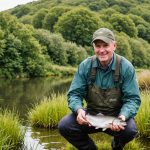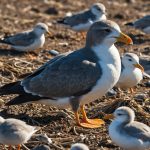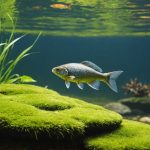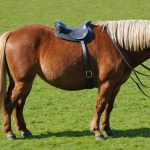Overview of Plastic Pollution Impact on Seabirds
Plastic pollution represents a significant threat to marine life, especially seabirds. The impact on seabird populations is profound, with evidence indicating dire consequences for many species.
Plastics in the ocean can become food for seabirds, who mistake it for prey. Statistics show that a third of all seabirds have ingested plastic, with notable names like the Northern Fulmar and the Shearwater frequently affected. This ingestion affects their health and breeding capabilities. Plastic ingestion can lead to malnutrition as it fills the stomach, leaving little room for actual food, thereby impacting their survival.
A lire en complément : Key tactics for uk anglers: safeguarding fish populations and fostering sustainable fishing practices
Additionally, seabirds face the danger of entanglement in plastic debris. Fishing nets and other waste are common marine pollutants, posing severe entanglement risks. These incidences can cripple or kill birds, further diminishing their populations.
The scale of plastic pollution in the UK alone suggests significant long-term risks to marine ecosystems. An estimated 8 million pieces of plastic find their way into oceans annually, with seabirds often trapped or ingesting them.
En parallèle : Top fish varieties for uk ponds: boost your local ecosystem with these ideal selections
Understanding the consequences of plastic pollution on seabirds encourages initiatives to reduce waste, supporting conservation efforts essential for preserving endangered seabird species and the health of marine life.
UK Initiatives to Combat Plastic Pollution
The United Kingdom actively addresses plastic pollution through comprehensive environmental initiatives and conservation projects. These efforts aim to safeguard both the environment and vulnerable species like seabirds.
Government Policies
The UK government has enforceable legislative measures focusing on minimizing plastic waste. These include bans on specific plastic items and increased funding for seabird conservation projects. This funding ensures the protection of seabirds affected by plastic pollution. Additionally, the government collaborates with environmental organizations and non-governmental organizations (NGOs) to tackle these issues collectively, making the approach more inclusive and effective.
Research and Innovation
Innovative technologies play a crucial role in monitoring seabird health. For example, sophisticated tracking systems assess the health and migration patterns of seabirds negatively impacted by plastic waste. Several case studies highlight successful projects aimed at reducing plastic pollution through such technologies. Research institutions are pivotal in developing these sustainable solutions, employing cutting-edge science to promote the well-being of both marine life and ecosystems.
Community Engagement
Engaging local communities is another key component. Initiatives are designed to encourage participation in pollution clean-up efforts, further strengthened by educational programs focused on seabird conservation. Schools and community groups are invaluable partners in these endeavors, fostering a collective sense of responsibility and action against plastic pollution.
Spotlight on Successful Case Studies
In examining the successful conservation case studies, a detailed look at specific projects reveals their impressive impacts on the environment. These projects demonstrate how targeted efforts can lead to significant environmental recovery and preservation, particularly concerning seabird populations.
One such example is the eradication of invasive species on islands, which has dramatically improved seabird recovery rates. These initiatives have immensely bolstered ecosystems where seabirds are crucial. For instance, in the case of the South Georgia rat eradication project, careful planning and execution led to a resurgence in seabird populations, with some species seeing a population increase of over 100%.
The impact assessment on seabirds showcases the power of well-executed conservation strategies. Seabird populations serve as essential indicators of marine health, so their recovery not only signals ecological success but also supports biodiversity. A well-documented increase in breeding success and population density provides a blueprint for similar conservation endeavors.
Lessons from these success stories emphasize the importance of sustained commitment, comprehensive planning, and adaptive management. They highlight key best practices, such as community involvement and using scientific research to inform decisions. These elements are central to replicating success in future conservation projects, ensuring that positive environmental impact continues to expand.
Future Strategies for Seabird Protection
Exploring future strategies for seabird protection is crucial for preserving these vital species. In particular, future conservation strategies highlight the need for comprehensive approaches and sustainable practices.
Long-term Goals
To effectively protect seabirds, long-term objectives need to be established in the UK and beyond. One of the primary concerns is mitigating plastic pollution through international collaboration. This challenge requires globally coordinated efforts to reduce plastic waste, thereby decreasing its impact on marine life. Furthermore, promoting sustainable fishing and tourism practices can significantly benefit seabird populations.
Several strategies include:
- Implementing stricter regulations on fishing net usage.
- Encouraging eco-friendly tourism that minimizes habitat disruption.
- Engaging communities in coastal areas to support these practices.
Innovations on the Horizon
Numerous emerging technologies promise new avenues for seabird conservation. For instance, advancements in monitoring devices can track seabird migration patterns more accurately. These insights are invaluable for developing better conservation plans.
In terms of policy, there are ongoing discussions about stricter regulations for plastic waste management. Such policies aim to reduce plastic production and promote recycling initiatives. Community-based approaches also play a pivotal role; engaging citizens through education and involvement can foster a sense of responsibility towards seabird protection.
Conclusion: The Path Forward for Seabird Conservation
Seabird conservation in the UK is at a pivotal juncture. Ongoing efforts have made strides in protecting these vital species, but much work remains. Collaborative approaches involving scientists, conservationists, and local communities are instrumental in driving change. By pooling resources and expertise, these groups can implement more effective strategies.
Innovation plays a crucial role in these collaborative approaches. New technologies and methods are constantly being developed to monitor seabird populations more precisely and sustainably. Engaging communities and raising awareness is equally important. Community involvement not only supports conservation efforts on the ground but also fosters a sense of stewardship among those living alongside these magnificent birds.
It’s not just about observing from afar. Everyone can contribute to seabird conservation through actions like reducing plastic waste or supporting local conservation bodies. These individual efforts, while seemingly small, collectively make a significant impact.
Readers are encouraged to seek out and participate in local initiatives. Whether it’s through volunteering, education, or advocacy, every action counts. By joining in ongoing efforts, you can play an active role in ensuring a brighter future for seabirds. Together, we can achieve sustainable conservation practices that protect these precious species for generations to come.











